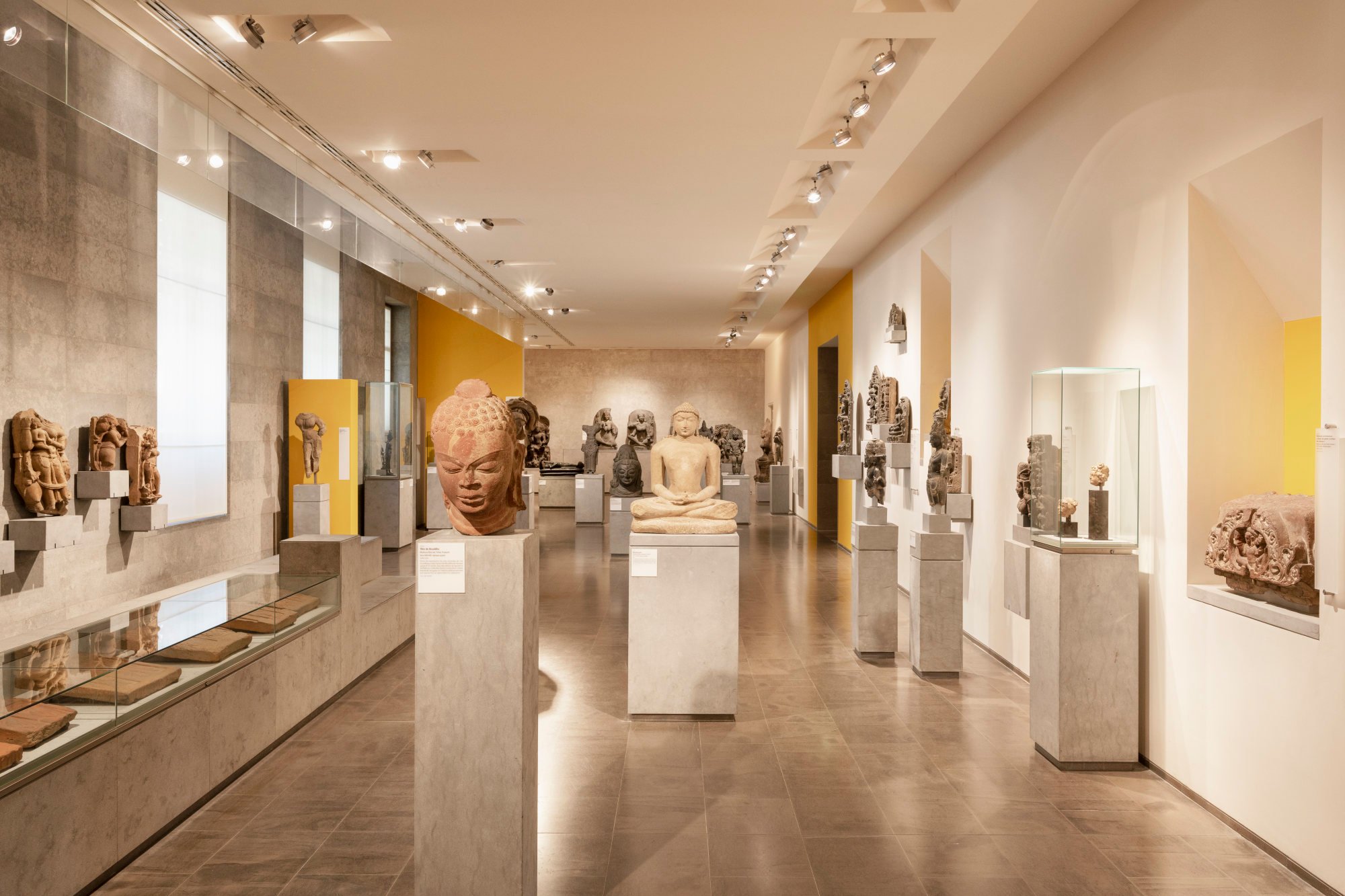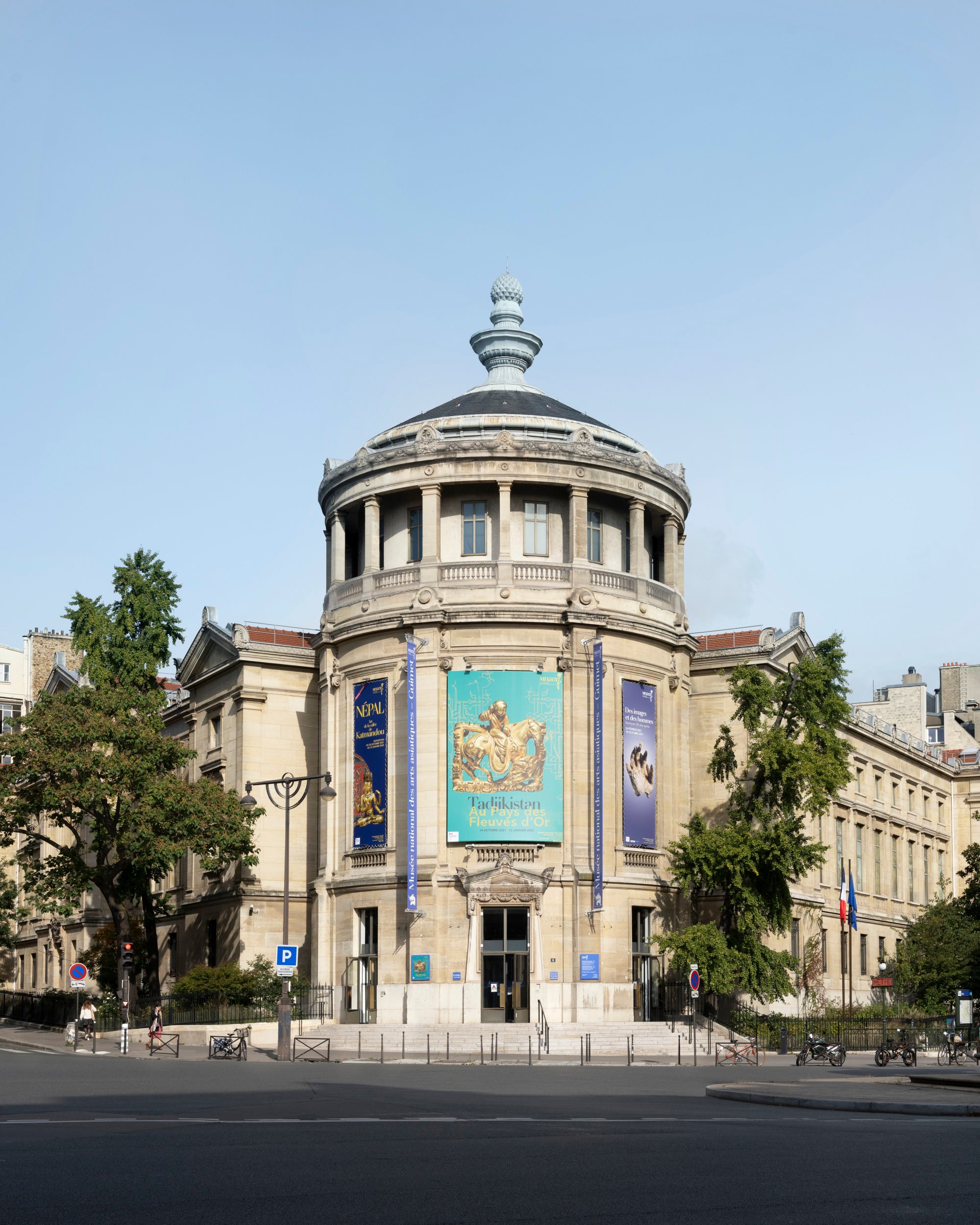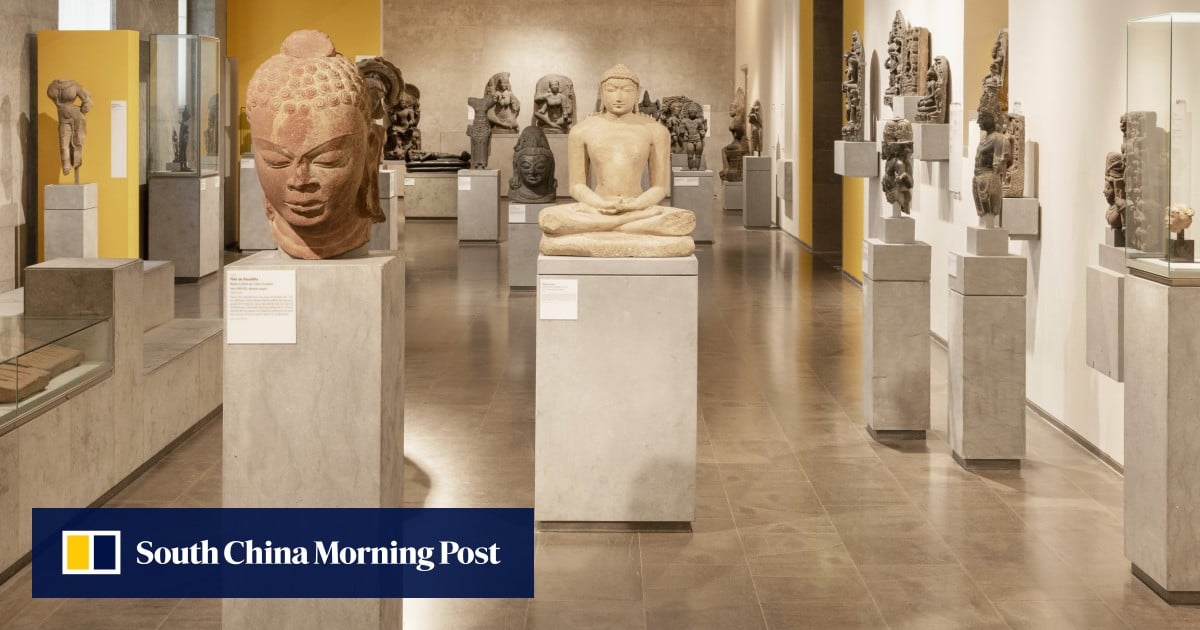“You don’t enter immediately into India or China: first, you are in Cambodia.”
This entrance is partly a result of Cambodia being a protectorate of France from 1863 to 1953, but also a reflection of how the Guimet houses works from not just the largest Asian nations, but across the continent, from Afghanistan all the way to Japan.
“When you are in China, you have Chinese art museums, when you are in India, you have Indian art museums,” says Lintz. “When you go to Southeast Asia you have, of course, always the national art museum. The idea of Asian art, more largely, is a European or a Western vision.”
After ‘Picasso of the East’ left China, his life was a mystery. Until now
After ‘Picasso of the East’ left China, his life was a mystery. Until now
Lintz is travelling from Paris to Hong Kong this month to speak at the West Kowloon Cultural District Authority’s first Hong Kong International Cultural Summit, where she will be part of a panel discussion titled “Rethinking Museum Interpretation in a Global Context”.
And as such, Lintz, who took on the Guimet mantle in 2022 after years as the director of the Islamic arts department at the Louvre Museum, does not shy away from issues of restitution and repatriation.
“It is, for me, an important question,” she says. “I have often seen museums that didn’t want to speak about this question, saying, ‘There is no problem. Everything is OK.’
“It’s a real, important challenge nowadays in Western museums, not only for Asian art, but for African art, and all whose collections were developed during the 19th and 20th centuries.”

The museum president believes that if a cultural object were indeed stolen or acquired through illicit means, it should be repatriated accordingly: “It has to be returned if it’s proved that it was stolen.”
But, as is the case with Guimet, the answers are never black and white. Provenance is key to determining and understanding whether objects have a place in museums outside their place of origin.
“What is important is not to refuse to speak, but on the contrary, to speak a lot about how our collection arrived in our museums,” says Lintz. “Because when you speak precisely about the history of the collections, the ways they arrived in the museum, for example in Musée Guimet, you can see that the story is more complex than just the idea that everything was stolen and brought to the West by illicit trafficking.
“Musée Guimet is a special situation in this context, because we were lucky to have a scientific collaboration with Cambodia that started at the end of the 19th century,” she says.
“The discussion that I have, for instance, with the minister of culture in Cambodia, is to say, ‘Let’s promote your heritage together. We have millions of visitors coming to Paris.’”

The Guimet is planning an exhibition in 2025 with more than 100 sculptures from the National Museum of Cambodia, in Phnom Penh. “We have to be clever together,” says Lintz. “It’s not revenge. The solution is not to return everything.”
The Guimet has also worked with institutions in mainland China for major exhibitions.
In 2021, it partnered with the Shanghai Museum, which showed “West Encounters East: A Cultural Conversation between Chinese and European Ceramics”.
This year, the Guimet is organising an exhibition dedicated to the Tang dynasty (AD618-907), to celebrate the 60th anniversary of diplomatic relations between France and China.
My chance is that my brand is Asia. I’m convinced that I have to develop this network of philanthropy in Asia
Lintz recently asked Maria Mok Kar-wing, director of the Hong Kong Museum of Art, to be part of her advisory committee for the Guimet, and Mok will also be a moderator on the Hong Kong International Cultural Summit’s “New Ways of Collaborating and Sharing in the Post-Pandemic Era: International Perspectives” panel.
“When I arrived as the head of Musée Guimet,” says Lintz, “I felt it was also important in this context of tension to prove that museums can create dialogues, not only conflicts. Museums are a wonderful diplomatic tool to develop dialogue between cultures.”
A Hong Kong collector named Richard Kan, for example, two years ago donated a blue and white meiping vase that dates back to the Yuan dynasty (1279-1368). Lintz calls it “the Mona Lisa of Musée Guimet”. High praise indeed, given that the museum has an extensive collection of imperial furniture, terracotta objects, bronze vessels and Dunhuang paintings.
Its collection is easily one of the largest Asian art collections in Europe, with the only notable competitors in size being the British Museum and the Victoria & Albert Museum, both in London.

Most European collectors in the 19th century were upper-middle class, which means they had space in their homes for decorative art. The interest in Asia was generated after many saw Asian art at exhibitions in Paris, or travelled to Asia themselves.
“They were not fascinated by things that they couldn’t otherwise see,” says Lintz. “But once they saw, on the market in Paris, in some dealer’s shop, very nice objects, like terracotta jars or porcelain vases that they could imagine in their houses, they started to buy.
“That’s why here, when you see the Chinese collection, of course you will see small objects of decorative art or of porcelain. It’s one of the most important collections here because this was typically what you could find on the market, and what you could imagine in your apartment.”
Joana Vasconcelos on creating ‘wow moments’ in her first Hong Kong art show
Joana Vasconcelos on creating ‘wow moments’ in her first Hong Kong art show
Although public institutions in France have been bankrolled entirely by the government in the past, funding has lessened in recent years, which is why Lintz has also sought to reach out to patrons from Asia.
“Of course, like every country, France is also in a weak situation from an economic point of view,” she says. “You can imagine that Musée Guimet will not convince someone who just gave a lot of money to the Louvre to give also to Guimet. But my chance is that my brand is Asia. I’m convinced that I have to develop this network of philanthropy in Asia.
“Every time I come to Hong Kong, when I visit the museums – the Hong Kong Museum of Art, the Hong Kong Palace Museum, or M+ – first of all, I admire what is done. We share with the different directors of those museums the same vision, the same type of questions about educational projects, about the way to develop storytelling.
“For me, coming in as the head of this museum today, in a world of tension and conflict, it’s very important to show the story of dialogue between Asia and the West.”
